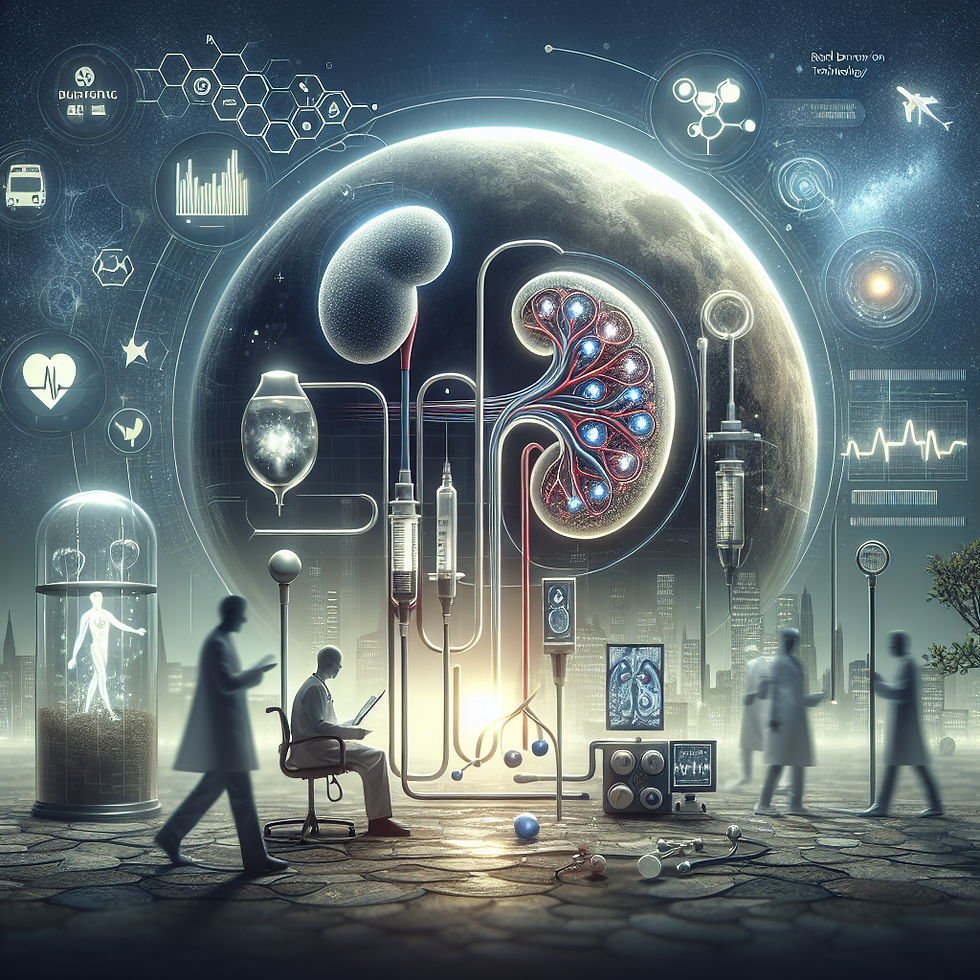The Pulse of Innovation: Electrophysiology Breakthroughs at HRS in Boston
- Michael Browers
- Jun 27, 2024
- 3 min read

In the historic city of Boston, where cobblestone streets intersect with cutting-edge innovation, the Heart Rhythm Society (HRS) conference last month turned the city into a pulsating hub of electrophysiology advancements. Renowned for its intellectual fervor and medical prowess, Boston played the perfect host to this gathering of minds focused on the latest breakthroughs in heart rhythm disorders. The confluence of academia, industry, and healthcare made for an electric atmosphere, buzzing with new ideas and groundbreaking technologies.
A City Synonymous with Medical Innovation
Boston's storied past and present are intricately woven with a commitment to pushing the boundaries of science and medicine. With top-tier institutions like Harvard and MIT, the city has long been a breeding ground for revolutionary ideas. It's no wonder that Boston stands at the forefront of the medical device industry, a role it embraced with fervor during the HRS conference. The city's vibrant ecosystem of startups, research institutions, and established companies creates a unique environment where innovation thrives.
Pulsed Field Ablation: The New Frontier
Among the myriad topics discussed at HRS, Pulsed Field Ablation (PFA) was the star of the show. This innovative technology, which selectively targets myocardial tissue while sparing adjacent structures, promises to revolutionize cardiac ablation. Companies showcased newly commercialized PFA catheters, such as the Farawave and PulseSelect. Concurrently, notable second-wave technologies aim to integrate mapping and ablation capabilities into a single device. Such integration promises not only to enhance procedural efficiency but also improves patient safety, marking a significant leap forward in electrophysiology.
Open Platforms: Breaking Down Barriers
A notable trend at the conference was the shift towards open platform systems--notably within mapping system integrations. Unlike the traditional closed systems that limit compatibility, these open platforms allow for seamless integration of different manufacturers' devices. This flexibility is poised to change the landscape of electrophysiology labs, offering clinicians more options and potentially accelerating the adoption of new technologies. The collaborative spirit in Boston’s medical community was evident as companies demonstrated how these open platforms can drive better outcomes and greater innovation.
Single-Shot and Large Area Focal Catheters: Simplifying Complexity
Innovation in single-shot and large area focal catheters was another highlight. These devices are designed to simplify ablation procedures by providing comprehensive coverage with fewer applications. The large-lattice PFA catheters and Sphere 9 PFA/Mapping Catheter exemplify this trend, promising to reduce procedure times and increase success rates. By making ablation more efficient and less cumbersome, these advancements have the potential to transform electrophysiology practices.
Cryoablation and RF Ablation: Evolving Traditions
While PFA stole the spotlight, traditional ablation technologies like cryoablation and radiofrequency (RF) ablation also saw significant advancements. New catheters are being developed to transition seamlessly between different energy modalities, providing versatility in treatment options. This strategic approach aims to retain existing market share while expanding into new technological territories, ensuring that tried-and-true methods continue to evolve alongside emerging innovations.
Efficiency and Safety: The Twin Pillars
At the heart of these technological advancements is a relentless focus on procedural efficiency and safety. Real-time feedback sensors, reduced catheter exchanges, and improved lesion durability are just a few of the innovations designed to make procedures faster, safer, and more effective. The ultimate goal is to enhance patient outcomes while minimizing risks, a mission that resonates deeply within Boston's medical community.
Boston: A Nexus of Collaboration
The success of the HRS conference was a testament to Boston’s unique position as a nexus of collaboration. The city's deep pool of regulatory and clinical expertise, combined with its culture of innovation, creates an ideal environment for advancing medical technology. The conference highlighted how Boston’s ecosystem of skilled professionals, cutting-edge research, and successful startups continues to drive global progress in electrophysiology.
Charting the Future
As the HRS conference drew to a close, the energy and optimism in the air were palpable. Boston, with its rich history and forward-looking mindset, had once again proven itself as a leader in medical innovation. The advancements showcased at HRS not only promise to improve the care of patients with heart rhythm disorders but also underscore the city’s role in shaping the future of medical technology. In the intersection of history and innovation, Boston continues to chart a course towards a healthier, more technologically advanced future.




Comentarios